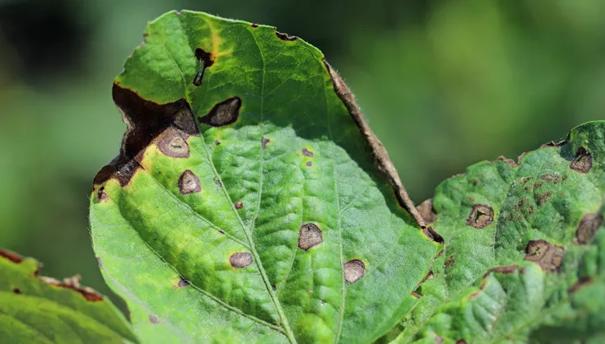Alternaria Leaf Spot
 Photo Credit: Margaret Tuttle McGrath, Cornell University
Photo Credit: Margaret Tuttle McGrath, Cornell UniversitySmall yellow spots that appear first on older leaves are a symptom of this fungal blight. These spots gradually enlarge and become dark-colored areas filled with concentric rings.
Alternaria leaf blight is particularly problematic for plants in the cabbage and squash families. Strawberries and carrots are also susceptible. When alternaria infects broccoli and cauliflower plants, it may cause brown areas on the heads. As with most fungal diseases, alternaria thrives in warm, wet weather. The spores are spread by wind and are able to enter leaf tissues when foliage has been consistently moist for 24 hours. The fungus overwinters on plant debris in and around the garden, and can also be transmitted by seed.
Prevention and Control
- Use seed from reputable sources and seek out alternaria blight-resistant varieties, such as Edisto 47 cantaloupe.
- In large gardens, practicing a three-year rotation of susceptible crops can help prevent a localized population of the fungus from building up. However, disease outbreaks may still occur if windblown spores reach your garden from neighboring gardens or farm fields.
- Clean up crop debris in the fall to reduce overwintering of the fungus.
Last updated: 12/15/2022
Print this Article:
Related Articles
Get the Dirt
Stay up to date on new articles and advice. Please fill out the information below.



